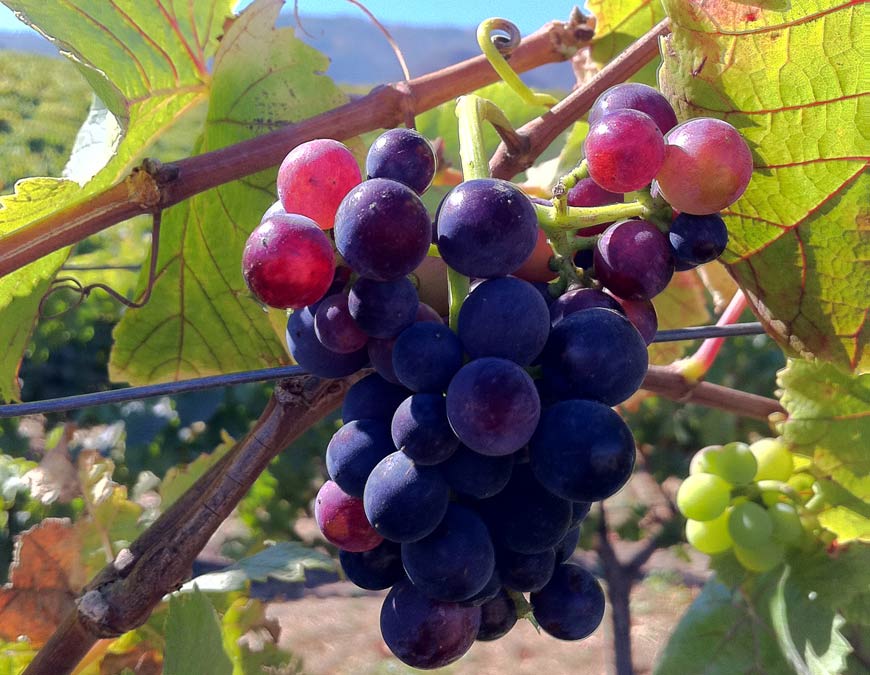So as a News Fix blogger, I felt I should conduct an investigation. The first idea I dreamed up, a fact-finding mission to the top wineries throughout the state, didn't survive the light of day. My duty, a minute-by-minute monitoring of Bay Area news, is really only possible from my desk.
So I did the next best thing: talk to folks on the ground.
Napa may not have quite as many tourist attractions as Monterey, but Allison Simpson, vice president of marketing for Visit Napa Valley, points out that it has about 400 wineries -- 150 of them open to the public. By comparison, Monterey has only 71 wineries with 31 tasting rooms.
It's not so much that Napa grows so much more wine – both have about 45,000 acres of vineyards -- but Monterey sends more of its grapes to be bottled elsewhere.
"The Napa Valley is a world-famous, highly regarded wine region for a reason," said Simpson. "We grow and make great wines and our vintners are renowned for their warm hospitality and that's what makes it such a great place to come and taste and drink."
She pointed out that Napa's microclimates allow it to grow an unusually wide range of grape varieties. Of course, Monterey also lays claim to a long list of varieties. So I called Jon Fredrickson of Gomberg, Fredrikson & Associates a wine industry consultant in Woodside, hoping for an unbiased analysis.
"Monterey has built up a number of interesting growing regions," he said. "It has nowhere near the number of wineries you would find in Napa or Sonoma. But it's less well known so you get more attention when you visit."
He told me that Monterey is too cool for some of the wines that made Napa's reputation, such as cabernet sauvignon and merlot. Wineries are also spread farther apart in Monterey, so the avid wine taster will have to do more driving between sips.
But a lot of good chardonnay is coming out of Monterey. And when it comes to pinot noir, he said, Monterey County’s Santa Lucia Highlands—in the hills west of the Salinas Valley—can match any in the world, including the Carneros district of southern Sonoma and Napa counties.
And something else distinguishes Santa Lucia Highlands wines, said Fredrickson: "You get a lot of value for your money."
Click on the pins to find out what wine costs at these three wineries in the Santa Lucia Highlands
View Santa Lucia Highlands in a larger map
My ears pricked up at that. The last time I visited Napa wineries, I was stunned to be asked for money up front just for the privilege of tasting in their well-appointed rooms, amid shelves stocked with pricey T-shirts, corkscrews and pâté.
It was a far cry from my youth in Sonoma’s Dry Creek Valley, when tasting rooms were sometimes just tables set up in the barrel rooms, and the wines were poured by the winemakers themselves.
I quickly realized why wineries impose fees for tastings now. Most of the bottles are outside my price range, and this is just about the only way they’re going to get any money out of folks like me.
Click on the pins to find out what wine costs at three wineries in Carneros.
View Carneros in a larger map
So I was curious to see how Monterey’s Santa Lucia Highlands and Napa’s Carneros stacked up in terms of actual dollars. For a true grape-to-grape comparison, I focused on pinot noirs in the two regions.
I called three Santa Lucia Highlands wineries mentioned by Frederickson: Paraiso Vineyard, Talbott Vineyard and Hahn Winery: Then I contacted three Carneros wineries named by Simpson: Saintsbury, Acacia Vineyard and Etude.
No doubt the comparison falls short of statistical significance, but the numbers seemed to confirm Frederickson’s point.
For example, at Etude winery in Carneros, the cheapest pinot noir is $42 a bottle, and it costs $20 just to get in the door. By contrast, Hahn Winery in Santa Lucia Highlands has a pinot noir for $14 (though not all the grapes in that wine are from that region), and tastings cost $10.
Overall, the least expensive pinot noirs at the three Carneros wineries average $37 a bottle. The Santa Lucia bargain pinot noirs average $20 a bottle.
The same is true of tasting-room fees -- an average of $20 for the Carneros wineries versus $8.33 for the Santa Lucia wineries. And two of the three Santa Lucia wineries will waive the fee if you buy a bottle of wine. None of the Carneros wineries do that.
